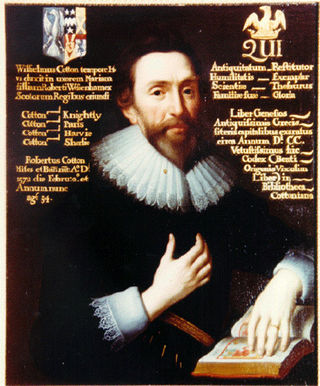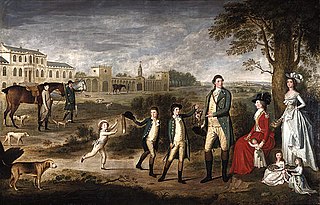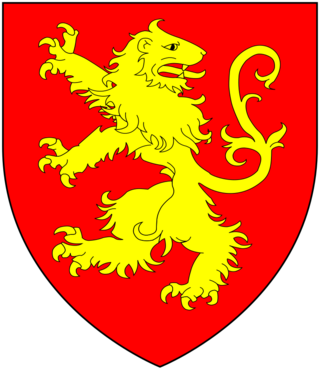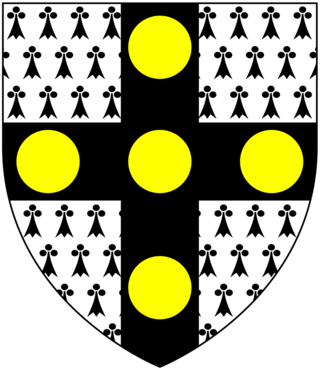
There have been three baronetcies created for persons with the surname Carew, two in the Baronetage of England prior to 1707, one in the Baronetage of Great Britain.

There have been three baronetcies created for persons with the surname Carew, two in the Baronetage of England prior to 1707, one in the Baronetage of Great Britain.
In August 1641, Charles I sold a number of baronetcies, to raise funds; one of these was the Carew Baronetcy, of Antony in Cornwall, was purchased by Richard Carew, Member of Parliament for Cornwall and St Michael's. [2] His son and second baronet, Sir Alexander, was executed for treason in December 1644, but succeeded by his son Sir John Carew, 3rd Baronet, MP for Cornwall, Bodmin, Lostwithiel and Saltash. The title became extinct in 1799.
The Carew Baronetcy, of Haccombe in the County of Devon, was created in the Baronetage of England on 2 August 1661 for Thomas Carew, Member of Parliament for Tiverton. [3] Like the Dukes of Leinster and Earls of Plymouth, The Carews claim descent from Walter FitzOther, Castellan of Windsor in 1078. Charles Carew, grandson of Reverend Thomas Carew, younger son of the sixth Baronet, sat as Member of Parliament for Tiverton. Patrick Henry Curtis Carew (b. 1931), great-grandson of Thomas Carew (1810–1876), third son of the seventh Baronet, is a Brigadier-General in the Royal Canadian Dragoons.
The heir apparent to the baronetcy is Gerald De Redvers Carew (born 1975), second but eldest living son of the 11th Baronet.
The Carew Baronetcy, of Beddington in the County of Surrey, was created in the Baronetage of Great Britain on 11 January 1715 for Nicholas Carew, Member of Parliament for Haslemere and Surrey. [4] The title became extinct on the death of his son, the second Baronet, in 1762.

There have been five baronetcies created for persons with the surname Barker, three in the Baronetage of England, one in the Baronetage of Great Britain and one in the Baronetage of the United Kingdom. All five creations are extinct.
There have been 18 baronetcies created for persons with the surname Campbell, six in the Baronetage of Nova Scotia and twelve in the Baronetage of the United Kingdom.

There have been three Baronetcies created for persons with the surname Cotton, all in the Baronetage of England. One creation is extant as of 2008.

There have been five baronetcies of the United Kingdom created for a person with the surname Erskine, two in the Baronetage of Nova Scotia, one in the Baronetage of Great Britain and two in the Baronetage of the United Kingdom. Two of the creations are extant as of 2010.

There have been two Baronetcies created for persons with the surname Allin, both in the Baronetage of England. Both creations are extinct.

The Morice Baronetcy, of Werrington in the County of Devon, was a title in the Baronetage of England.
There have been seven baronetcies created for persons with the surname Powell, five in the Baronetage of England and two in the Baronetage of the United Kingdom. Only one creation is extant as of 2007.

There have been three Baronetcies created for persons with the surname Seymour, two in the Baronetage of England and one in the Baronetage of the United Kingdom. One creation is extant as of 2008.

The Molesworth, later Molesworth-St Aubyn Baronetcy, of Pencarrow near St Mabyn in Cornwall, is a title in the Baronetage of England. It was created on 19 July 1689 for Hender Molesworth, Governor of Jamaica. The second Baronet sat as Member of Parliament for Lostwithiel and Bossiney. The fourth Baronet represented Newport and Cornwall in the House of Commons. The fifth and sixth Baronets sat as Members of Parliament for Cornwall. The eighth Baronet was a prominent Radical politician and served as Secretary of State for the Colonies from July to October in 1855.

The Mostyn baronets are two lines of Welsh baronets holding baronetcies created in 1660 and 1670, both in the Baronetage of England. One creation is extant as of 2015. The two lines are related and both claim descent from Edwin of Tegeingl, an 11th-century lord of Tegeingl, a territory which approximates modern Flintshire.

There have been four baronetcies created for members of the ancient House of Beaumont, all in the Baronetage of England. All four creations are extinct or dormant.
There have been five baronetcies created for members of Clan Ramsay, four in the Baronetage of Nova Scotia and one in the Baronetage of the United Kingdom. The baronetcy in the Baronetage of the United Kingdom is extant as of 2023.
The Copley baronetcy was first created for Godfrey Copley on 17 June 1661. He was High Sheriff of Yorkshire for 1676–77.
The Wolstenholme Baronetcy, of London, was a title in the Baronetage of England. It was created on 10 January 1665 for John Wolstenholme, who had previously represented West Looe, Newport and Queenborough in Parliament. He had been heavily fined by the Parliamentarians for supporting the Royal cause during the Civil War. The third Baronet sat as Member of Parliament for Middlesex. The title became extinct on the death of the seventh Baronet in 1762.
The Bayntun-Rolt Baronetcy, of Spye Park in the County of Wiltshire, was a title in the Baronetage of Great Britain. It was created on 7 July 1762 for Edward Bayntun-Rolt, for many years Member of Parliament for Chippenham.

There have been two baronetcies created for persons with the surname More, both in the Baronetage of England. Both creations are extinct.
There have been two baronetcies created for persons with the surname Garrard, both in the Baronetage of England. Both creations are extinct.
Sir Thomas Carew, 1st Baronet of Haccombe, Devon, was an English politician who sat in the House of Commons from 1661 to 1674.

Nicholas Carew, Lord of Moulsford, was a baron of medieval England who took part in the Wars of Scottish Independence.

The manor of Haccombe was a historic manor in the small parish of Haccombe, near the town of Newton Abbot, Devon, England. It was the seat of important branches of the Courtenay and Carew families.